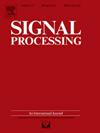3D mmW sparse imaging via complex-valued composite penalty function within collaborative multitasking framework
IF 3.4
2区 工程技术
Q2 ENGINEERING, ELECTRICAL & ELECTRONIC
引用次数: 0
Abstract
The emerging three-dimensional (3D) millimeter-wave (mmW) array SAR imaging with compressed sensing (CS) has shown impressive potential for improving image quality. However, the widely used penalty function belongs to convex operators, which introduce bias effects in imaging and reduce reconstruction accuracy. In the context of 3D imaging, a single is inadequate for characterizing the spatial features of the target, resulting in the loss of information. Additionally, the complex-valued nature of SAR data should be considered to further improve imaging performance. Therefore, in this article, a 3D sparse imaging method based on the complex-valued composite penalty function (CCPF) is proposed. Firstly, a CCPF is presented, which combines complex-valued minimax convex penalty (CMCP) and complex-valued 3D total variation (C3DTV) to alleviate bias effects while preserving the spatial structure information of the target. Secondly, the improved collaborative multitasking framework based on variable splitting and alternating minimization is presented to solve optimization problems with CCPF. Furthermore, the proposed method takes into account the complex-valued characteristics of SAR data and preserves the phase information of the imaging scene, which is beneficial for subsequent image interpretation. Finally, the effectiveness of the proposed method has been validated by a substantial amount of experimental data.
协同多任务框架下基于复值复合惩罚函数的三维毫米波稀疏成像
新兴的三维(3D)毫米波(mmW)阵列SAR成像与压缩传感(CS)已经显示出令人印象深刻的潜力,提高图像质量。然而,广泛使用的L1罚函数属于凸算子,会在成像中引入偏置效应,降低重建精度。在三维成像的背景下,单个L1不足以表征目标的空间特征,导致信息丢失。此外,应考虑SAR数据的复杂值特性,以进一步提高成像性能。为此,本文提出了一种基于复值复合惩罚函数(CCPF)的三维稀疏成像方法。首先,提出了一种结合复值极大极小凸惩罚(CMCP)和复值三维总变差(C3DTV)的CCPF算法,在保留目标空间结构信息的同时减轻了偏置效应;其次,提出了一种基于变量分割和交替最小化的改进协同多任务框架来解决CCPF的优化问题。此外,该方法考虑了SAR数据的复值特征,保留了成像场景的相位信息,有利于后续的图像解译。最后,通过大量的实验数据验证了所提方法的有效性。
本文章由计算机程序翻译,如有差异,请以英文原文为准。
求助全文
约1分钟内获得全文
求助全文
来源期刊

Signal Processing
工程技术-工程:电子与电气
CiteScore
9.20
自引率
9.10%
发文量
309
审稿时长
41 days
期刊介绍:
Signal Processing incorporates all aspects of the theory and practice of signal processing. It features original research work, tutorial and review articles, and accounts of practical developments. It is intended for a rapid dissemination of knowledge and experience to engineers and scientists working in the research, development or practical application of signal processing.
Subject areas covered by the journal include: Signal Theory; Stochastic Processes; Detection and Estimation; Spectral Analysis; Filtering; Signal Processing Systems; Software Developments; Image Processing; Pattern Recognition; Optical Signal Processing; Digital Signal Processing; Multi-dimensional Signal Processing; Communication Signal Processing; Biomedical Signal Processing; Geophysical and Astrophysical Signal Processing; Earth Resources Signal Processing; Acoustic and Vibration Signal Processing; Data Processing; Remote Sensing; Signal Processing Technology; Radar Signal Processing; Sonar Signal Processing; Industrial Applications; New Applications.
 求助内容:
求助内容: 应助结果提醒方式:
应助结果提醒方式:


